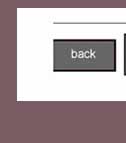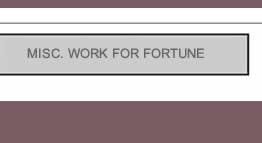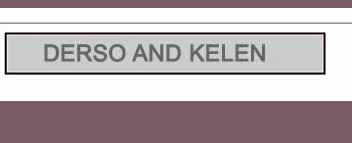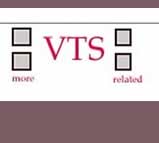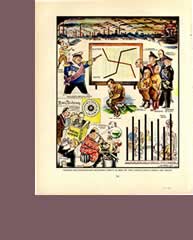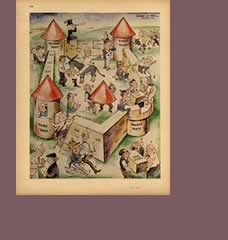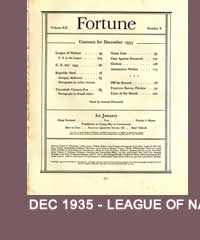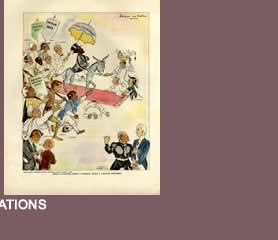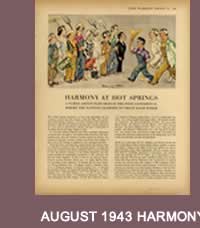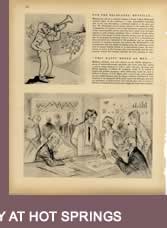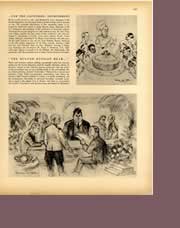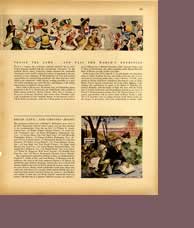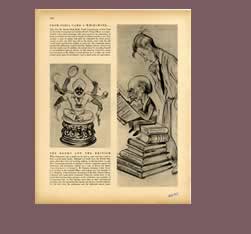Aloysius Derso (1888-1964) and Emery Kelen (1896-1978) a prolific collaboration balefully regarding the political personalities and the chaos they generated in Europe between the Wars. Their maion estate is held by Princeton Library who attach this excllent description of their careers,
Emery Kelen was born in Györ, Hungary in 1896. He attended art school in Vienna, but with the onset of World War I was drafted into the Austro-Hungarian army at the age of 19. He witnessed war firsthand at the battle of the Isonzo River near the Austrian-Italian border in 1917, which contributed to his enduring hatred of war. Kelen contracted typhus while on the battlefield and was sent to a hospital in Croatia to recover. He was ordered back to the front after he recovered, but, overwhelmed by his war experience, Kelen was sent to the Klosterka military insane hospital in Nagyzombat, Hungary. At Klosterka, he returned to drawing by sketching portraits of the insane and in his autobiography, Peace In Their Time, refers to Klosterka as his "academy of caricature."
Kelen returned to his hometown at the end of the war, but moved to Paris and then to Munich in 1919. While in Munich he worked as a sports cartoonist for Fussball and attended the art school of Hans Hofmann (1880-1966). In 1922, Kelen moved to Lausanne, Switzerland to continue his career in sports illustration. Gradually, due to his interest in history and politics, he turned his pen to freelance artwork illustrating the political and diplomatic scene.
Kelen met Alois Derso in 1922 at a chance meeting at a press bar in Lausanne. Sharing similar biographical backgrounds, both being Jews from Hungary and artists, they became friends and collaborators for the next 30 years – the first twenty years in Europe and the last ten years in the United States.
During the 1920s and 1930s, Kelen and Derso worked in Europe illustrating inter-war Europe with their cartoons. As witnesses to this history, they drew caricatures of famous diplomats and statesmen of the day and satirical cartoons of their activities. They traveled to the major European capitals observing the numerous economic, disarmament, and peace conferences (the 1925 Locarno Conference, the 1933 London Economic Conference, the 1932 World Disarmament Conference); they were also the dedicated pictorial reporters of the meetings and delegates of the League of Nations. As active members of the international press corps, their work was eagerly sought after providing a humorous daily record of events at a time when cameras were not allowed in the conference rooms. Their work was published widely in the European print media ( Illustrated London News; London News Chronicle; Le Rire; Tribune de Genève; Münchner Illustrierte Zeitung) and in 1934 they also mounted two exhibits of their works – one in London and the other in Geneva. In these decades most of their lithographic portfolios were either commissioned pieces like the "Round Table Conference" portfolio commissioned by the Maharaja of Kashmir or commercially released portfolios like the "Testament de Genève" that illustrated and commented upon ten years of ‘international cooperation’ at the League of Nations.
Kelen and Derso departed Europe on December 13, 1938 aided by friends who recognized the impending dangers facing them due to their Jewish heritage not to mention their open criticism of Hitler’s rise to power.
They settled in New York City making their living from a variety of commissions offered by magazines and newspapers. One of the cartoonists’ contacts in New York was the editor of Esquire magazine, Arnold Gingrich, who was ready to embark on a new political publication entitled KEN. Though a short-lived magazine, Kelen and Derso were steady contributors illustrating for the American public the devastating aggression of Hitler. Other editors of prominent publications such as Fortune and the Christian Science Monitor sent Kelen and Derso to capture through illustrations the events of the 1939-40 New York World’s Fair, the 1944 Republican Convention in Philadelphia, and the 1945 United Nations Conference on International Organization in San Francisco. Their political cartoons were syndicated and published in major U. S. newspapers and magazines such as Esquire, the New York Times Magazine, Ken, the Daily Telegraph and Morning Post, Fortune, the New York Post, the Christian Science Monitor, the Washington Post). At times Kelen and Derso drew editorial cartoons for publications for the French, Polish, and Yugoslavian governments-in-exile. With the end of World War II, they turned their pens to the subjects of American politics and the formation and proceedings of the United Nations. As Kelen wrote in their 1950 publication, The United Nations Sketchbook, Derso and I "followed the peace junket through Locarno, Rapallo, The Hague, Paris, London, Washington, and New York, to jibe, joke, jollify, and so make a poor living."
By the late 1940s, Kelen and Derso parted company professionally. From 1948 -1956, Kelen worked for the Office of Public Information at the United Nations as its first television director and producer covering many historic speeches before the General Assembly including President Eisenhower’s "Atoms for Peace" speech. Kelen published a number of books on a wide range of topics from a humorous commentary on world politics to a biography of Dag Hammarskjöld as well as numerous children’s books. After retirement, Kelen wrote character studies of prominent people titled "Written In His Face" for European newspapers and a column of reminiscences for The Hindu of Madras. In 1963, he published his autobiography Peace In Their Time. Kelen married Betty Stones on September 25, 1940; they had one child, Juli Kelen. Kelen died on October 12, 1978 in Vienna, Austria.
Though the record of Derso’s early life is not well documented, it seems remarkably similar to Kelen’s. Derso was born in Baja, Hungary in 1888. He attended art school at the Academy of Fine Arts in Budapest from 1908-1909. From 1909 through 1914 he studied at the Academy Colarossi and the Academy Grande Chaumière in Paris. According to the memoir essay written by Betty Kelen, Derso "was employed in the war by the Austro-Hungarian High Command as a church robber." He was to search the churches of conquered territory in northern Italy to evaluate the art work and "arrange for items worth stealing to be brought back to the homeland for safe keeping." After the war he was drawn to Switzerland for the same reason as Kelen’s -- to pursue a career in pictorial journalism. Much of Derso’s biography in the twenties and thirties corresponds to Kelen’s story as once they became friends and artistic colleagues they traveled and worked in tandem.
In the early 1950s, while Kelen worked at the United Nations, Derso became a frequent contributor of portrait illustrations of politicians and policy makers for William F. Buckley’s National Review, from its inaugural issue in 1955 until Derso’s death in 1964; many of these portraits are in this collection.
He also published his work in the German newspaper Süddeutsche Post. In 1959, Derso was awarded a fellowship from the ‘Conference on Jewish Material Claims Against Germany’ to produce a book with the tentative title of "Jewish Profiles of Four Decades on the International Scene." Derso hoped to publish an art book of 100 portraits of Jewish statesmen, diplomats, writers, artists, scientists and bankers, but, ultimately, did not pursue the fellowship.
Derso never married and died in 1964 in New York City.
|
